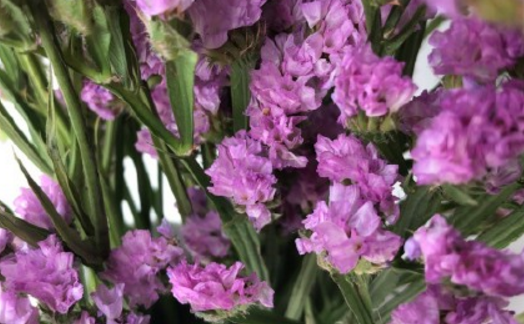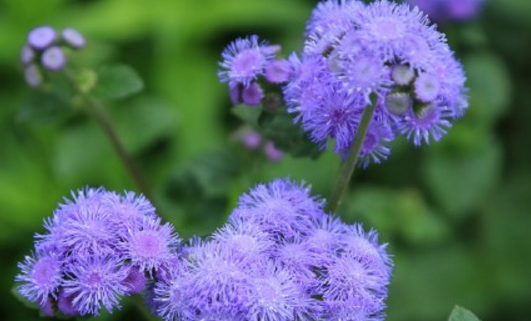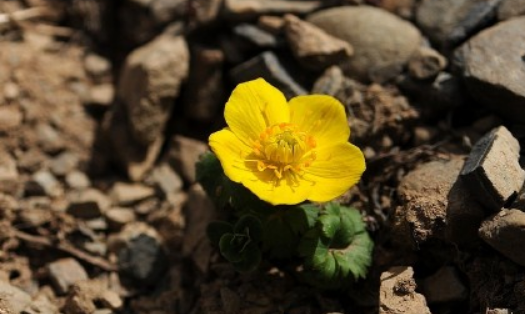What is the planting method of Baihua Danke Buxue grass? Disease and its control? What is the use of it?
Buxue grass is mainly distributed in the hillsides and meadow saline soil of Northeast China, Inner Mongolia, Inner Mongolia and other places in China, so what is the planting method? Disease and its control? What is the use of it? It is understood that Buxue grass likes cool climate and strong light. It blossoms well after low temperature treatment, and the low temperature is between 10-16 ℃. If the plant is treated with low temperature in the seedling stage, the high temperature will not affect the flowering in the future; if the seedling stage is planted directly under high temperature without low temperature treatment, the flowering will be obviously inhibited or not flowering.

First, what is the planting method of Buxue grass?
1. Soil and fertilizer selection of Buxue grass.
Buxue grass needs soft soil, you can choose sterilized rotten leaf soil or mix peat and perlite at the ratio of 1:1; the demand for boron is high, so adding borax to base fertilizer can effectively adjust soil fertility and soil pH value. Topdressing can be applied indirectly with diluted soybean cake water and available nitrogen, phosphorus and potassium.
2. Temperature control of Buxue grass.
After sowing, it is necessary to undergo low temperature vernalization treatment to help blossom, and when the autumn temperature is 18-21 ℃, it usually sprouts in about 5 days. After budding, the seedlings can be treated at low temperature below 16 ℃ and maintained at normal temperature after 3 days.
The seedlings can be divided when the first true leaf appears, and it can be planted when the leaves reach 5 to 6, usually from October to November, flowering from June to August, 18: 20 ℃ in the daytime, 10: 15 ℃ at night, and the lowest can not be less than 0 ℃.
3. Light control of Buxue grass.
Buxue grass needs ventilation and transparent environment, which can effectively reduce the occurrence of diseases. Cultivation methods can choose double-row cross-planting or three-row planting. Plum blossom-like planting is also common in field planting. Buxue grass likes light, so it is necessary to pay attention to light in the process of planting. Of course, exposure to the sun is not allowed, summer noon needs shade treatment.
4. late maintenance of Buxue grass.
In the peak period of inflorescence emergence and growth, the supply of water and fertilizer must be adequate, otherwise it is easy to cause short flowers and not blooming flowers. In the growth and extraction of blood grass, it is necessary to draw a net or set up a pillar to prevent lodging. After collecting the first crop of flowers, remove the old branches and withered leaves in time to promote the germination of new buds so as not to consume more nutrients. It should be noted that Buxue grass is a straight-root plant, which must be transplanted with soil at the seedling stage to prevent root injury so as to improve the survival rate.
Second, the disease and its control?
1. Virus disease
Pathogen
There are many viruses that harm blood grass, such as blood grass virus, cucumber mosaic virus and tomato mosaic virus.
Symptom
The plant will become shorter, the leaves will become smaller, and the plant and leaves will become deformed.
Prevention and cure measures
The most important thing is to choose good and healthy seeds for planting, or non-toxic and harmless cultivation; if plants with virus infection are found, they should be treated in time, and the diseased plants should be destroyed to prevent reinfection; if there are signs of virus infection, drugs should be used.
2. Scorch blight
Pathogen
Botrytis cinerea
Symptom
Grayish-brown dots will appear on the leaves, which will cause the leaves to die in the later stage until the whole plant dies.
Prevention and cure method
If diseased plants are found, they should be destroyed in time to prevent infection of other healthy plants; seeds should be treated before planting and disinfected with drugs; attention should be paid to watering management in the process of planting; attention should be paid to not watering leaves and flowers when watering, and indoor should be kept dry. If diseased plants are found, drug treatment should be carried out.
3. Brown spot
Pathogen
Cercospora
Symptom
There will be yellowish-brown spots on the lateral leaves and tea-brown in the later stage.
Prevention and cure method
Spraying treatment should be carried out in time after the diseased plant is found, and continuous drug treatment can be effective.
Third, what is the use value?
1. The scientific research value of Buxue grass.
Buxue grass is a kind of plant with strong tolerance to saline-alkali, drought and adaptability. it is developed and utilized as a wild ground cover plant in China, and it is one of the important ways to realize high-quality greening of saline-alkali soil. Under salt stress, Herba Scutellariae can maintain better cell membrane structure and higher SOD activity, so as to ensure its normal physiological activities. The surface of salt gland structure shows beautiful flowers
In blossom type, salt glands can secrete the salt absorbed into the plant to the outside body, so as to avoid the toxicity of ions.
2. The medicinal value of Buxue herb.
Buxue herb as a traditional Chinese medicine, the whole plant can be used in medicine, especially the root, with antipyretic, pain, blood, anti-inflammatory, detumescence, detoxification and other effects, can treat gastric ulcer, spleen deficiency edema and other symptoms.
In recent years, chemical studies on Buxue grass have shown that Huoxue grass contains a lot of polysaccharides. Further molecular biological studies found that polysaccharides extracted from Buxue grass can regulate the expression of genes in tumor cells and promote tumor cell apoptosis, so as to achieve the purpose of anti-tumor.
3. The ornamental value of Buxue grass.
The plants of the genus Tripterygium have the characteristics of long flowering period, rich flower color and high ornamental individual population. In particular, the flowers and colors are diverse, showing golden, light yellow, pure white, lavender, pink and other colors, and the plants (including flower stems) are all less than 1m, which is easy to create a colorful group landscape in urban greening.
4. The economic value of Buxue grass.
In addition to the above values, Buxue grass, as a sunrise industry, has a good market prospect. As a cut flower material and dried flower decoration, it has received more and more attention and is widely used. It is in short supply in the flower market and home decoration market, and the development potential is unlimited.
Time: 2019-03-16 Click:
- Prev

What is the difference between Platycodon grandiflorum patchouli thistle and false smelly grass? How do you plant seeds? Is it poisonous?
Patchouli thistle, alias Shenghong thistle, also known as salted shrimp flowers, hairy musk, butterfly grass, etc., so what is the difference between patchouli thistle and pseudostinky grass? How do you plant seeds? Is it poisonous? According to the data, although Huoxiang thistle and pseudostinky grass both belong to Compositae, Huoxiang thistle belongs to Shenghong thistle, while pseudostinky thistle belongs to Cymbidium.
- Next

The taboo of Ranunculus trollius to drink in water? How to water and fertilize? How do you plant seeds?
Trollius is a plant of the genus Trollius of Ranunculaceae, which is a kind of toxic Chinese herbal medicine, so it is taboo to drink Trollius in water. How to water and fertilize? How do you plant seeds? According to the data, when drinking Trollius, you should be careful not to drink too much. It is a third of the poison.
Related
- Fuxing push coffee new agricultural production and marketing class: lack of small-scale processing plants
- Jujube rice field leisure farm deep ploughing Yilan for five years to create a space for organic food and play
- Nongyu Farm-A trial of organic papaya for brave women with advanced technology
- Four points for attention in the prevention and control of diseases and insect pests of edible fungi
- How to add nutrient solution to Edible Fungi
- Is there any good way to control edible fungus mites?
- Open Inoculation Technology of Edible Fungi
- Is there any clever way to use fertilizer for edible fungus in winter?
- What agents are used to kill the pathogens of edible fungi in the mushroom shed?
- Rapid drying of Edible Fungi

